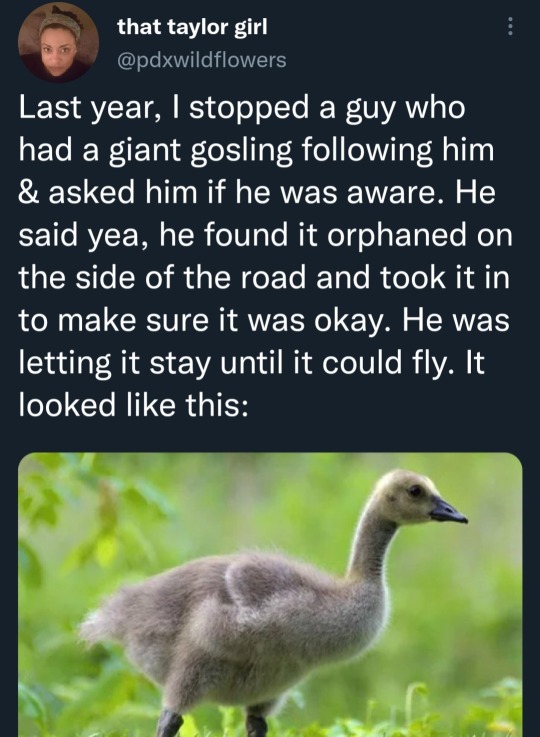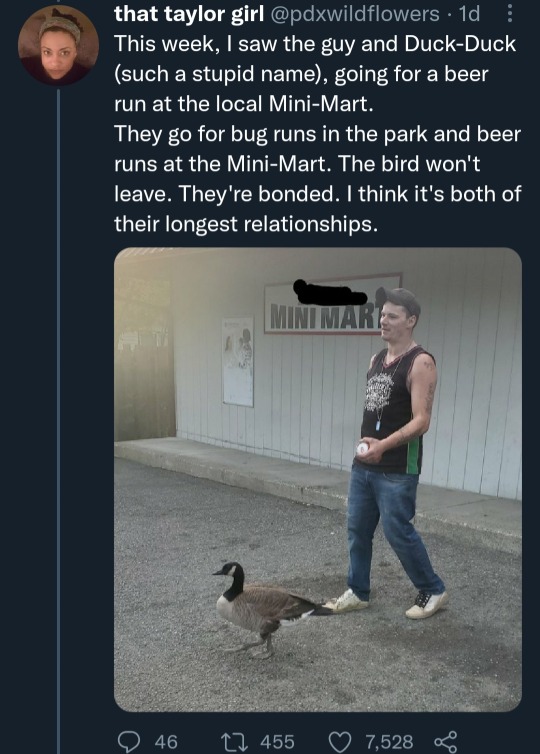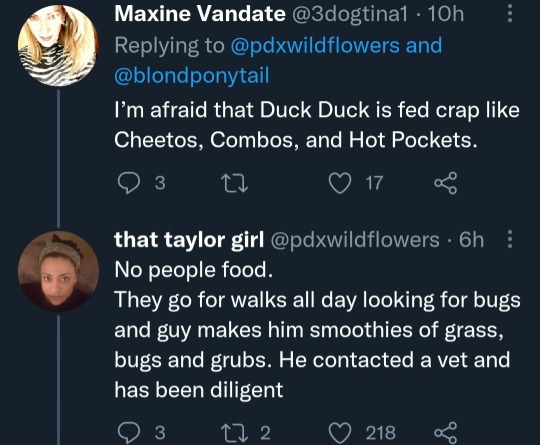#cackling geese
Explore tagged Tumblr posts
Text
How to Identify Cackling Geese
Click here to learn more about the How to Identify article series.

Name: Cackling Goose (Branta hutchinsii)
Range and typical habitat(s): Breeding range Arctic regions of Canada and Alaska; winters in Pacific Northwest, Midwest, east coast and Great Lakes region of United States and Canada; migrates through Midwest of North America, as well as along west coast.
Get the full profile under the cut, including physical characteristics, behaviors, similar species and more!
Distinguishing physical characteristics:
Size/Shape/Proportions��– The cackling goose is rather small for its kind, generally not growing much beyond two feet in length, with a wingspan about 42-44 inches across, and a weight of no more than about seven pounds. It has a comparatively small beak with a sharp slope to its forehead. It has a typically “goose-like” silhouette, with a heavy body, long neck, small round head and flat, tapering beak, all carried on skinny legs with wide webbed feet. Its neck is not as proportionately long as that of other geese, something that will come in handy when differentiating with similar species below.

Colors – Its distinctive coloration includes a dusky brown body, darker on the back and wings than on the belly, with a white backside. The neck and head are black, with a white chin strap and sometimes a small partial or complete ring of white at the base of the neck. The beak and legs are dark gray to black. Cackling geese have a black tail and rump with a distinctive white U or V shape on the top side in flight. There are four to seven recognized subspecies depending on who you talk to, all of which may show minor variations in coloration, but the above description is generally accurate. Female and male geese are largely the same color; goslings are fluffy yellow with light brown markings above, and juveniles have paler versions of their future adult plumage.
Behaviors – Like other waterfowl, cackling geese are highly gregarious, particularly outside of breeding season, and can be found in large flocks throughout winter. They are herbivorous, and throughout the year will subsist on various grasses, berries, grains and other seeds. They are less likely to eat aquatic plants than their Canada goose cousins.
These migratory birds engage in long-distance seasonal flights between their summer breeding grounds in the Arctic and wintering around in the United States. Once they reach their breeding grounds, they reunite with their lifemates, engaging in enthusiastic wing-spreading and vocal rituals with each other, after which they find suitable nesting sites near water.
Female cackling geese are largely responsible for building the nest, and each will lay anywhere from two to eight eggs. After about twenty-five days the eggs hatch, and the precocious young leave with their parents as soon as the last one has hatched and found its legs. They will stay with their parents for the next year, migrating with them as a family. The young geese will not seek out a mate until they are at least two years of age, sometimes even waiting another year before looking for just the right goose or gander to pair up with.
Cackling geese get their name from their distinctive high-pitched call. It sounds rather like a “yip” that starts low and rolls up several notes with a sharp ending. Some subspecies may have a lower-pitched call more reminiscent of a Canada goose’s honk.
Here’s a video I took of cackling geese in flight with social calls:
youtube
Movement – As with all waterfowl, cackling geese are mobile on land, in water, and in the sky. They are powerful fliers, with swift, strong, even wingbeats that can carry them long distances on their migrations. They mainly feed on land, and while they are not especially fast when walking, they can waddle for hours in search of food. They are quite buoyant in water, and when seeking aquatic food they will dabble, but not submerge themselves completely.
Other organisms it could be confused with and how to tell the difference: By far, the closest lookalike for the cackling goose is its larger cousin, the Canada goose (Branta canadensis). As a general rule, Canada geese are larger than cackling geese, though there is some size crossover between the largest cacklers and smallest Canadas. Both species have almost identical coloration and lots of variation within, but studying your local populations of both may reveal localized color patterns in each species.
Cackling geese also have a proportionately shorter neck and smaller beak, and a more pronounced stop to their forehead. Canada geese, on the other hand, have a more gradual, sloping transition from forehead to beak, and a long, graceful neck.

Larger Canada geese are on the left and right sides of this group, while the smaller cackling geese are at the center. Photo by Dominic Sherony, CCA-SA 2.0.
The brant goose (Branta bernicla) also looks similar to the cackling goose, being the same general size and shape, but it most tellingly lacks the white chin strap (many have a partial white ring further down the neck), and the black on its neck extends well onto the breast and upper back. The body may be a darker gray or brown, and the color of the primary feathers on the wings are darker as well. The white V on the tail and rump is often wider on Brant geese than cackling, though individual variations may occur.

Brant goose
Further Reading:
https://www.allaboutbirds.org/guide/Cackling_Goose/
https://ebird.org/species/cacgoo1
sibleyguides.com/2007/07/identification-of-cackling-and-canada-goose/
https://www.audubon.org/field-guide/bird/cackling-goose
Did you enjoy this post? Consider preordering my book The Everyday Naturalist, taking one of my online foraging and natural history classes or hiring me for a guided nature tour, or checking out my other articles! You can even buy me a coffee here!
#cackling geese#geese#waterfowl#birds#Canada geese#birdblr#birding#birdwatching#nature#nature identification#educational#wildlife#animals#fauna#long post#migratory birds#Youtube
27 notes
·
View notes
Text
IM GONNA CRY COLORADO ACTUALLY HAS CACKLING GEESE AND AFTER SO LONG OF THERE HYPOTHETICALLY BEING CACKLING GEESE IN CALIFORNIA AND THUS ME ALWAYS WONDERING IF IT WAS A SMALL CANADA GOOSE OR A CACKLING GOOSE IN HOPES
IVE ACTUALLY SEEN THREE LIVE NOW AND YOU CAN TELL AND I LOVE THEM THEYRE SO SMALL AND CUTE (my photo btw)

(image id: a photo of two birds by the lake, one is a small goose - the cackling goose - with a black head and brown body, the other is a large goose - the canada goose - with a black head and brown body; they look very similar except the former is significantly smaller and has rounder facial proportions)
#cackling goose#cackling geese#canada goose#canada geese#babies#bird watching#birding#birdblr#bird photography#photography
40 notes
·
View notes
Text


Some cacklers flew by
#birds#geese#cackling geese#original photography on tumblr#nature#vancouver island#nature photography#pnw#birding#bird photography#birdwatching#queue
12 notes
·
View notes
Text





man... waking up at 5 am today was worth it

#my photography!#bird photography#birding#birds#dawn#sunrise#Canada geese#cackling geese#bafflehead#ducks#sky
75 notes
·
View notes
Text
Great news everyone that’s actually a cackling goose, the Canadian Goose (demon cobra chicken)’s smaller, cuter, and less aggressive cousin <3






198K notes
·
View notes
Text
✨Muriel✨
on geese:

on being a Human Police Officer:

on tea:

on humans in love:

on books:

#good omens#good omens 2#good omens spoilers#good omens 2 spoilers#good omens muriel#muriel#angel muriel#I LOVE THEM SO MUCH#you're doing amazing sweetie#'big cross ducks' i cackled#pls try the tea i'm sure you'll love it#now take good care of the bookshop and don't sell anything#go2#go2 spoilers#i made this#why were these more of a struggle than the last ones lol#especially the geese one it looks terrible T_T#would be easier if i had rips of the episodes i imagine#but now i'm determined to get better at gifs#anyway love you muriel
503 notes
·
View notes
Text


#just some pics from this week#the cackling geese are back!!#and everything is super flooded already#gonna be a rough winter#jo goes outside#birding#nature photography
7 notes
·
View notes
Text
I am neutral about Canada geese


Normal bird, there are lots of them. They leave shit in my yard and everywhere I walk but it’s just grass so it doesn’t matter to me. I chase them around and they never fight back because they know I’m the master of all birds. I’m kind of goated at commanding birds. Cackling geese are somewhat annoying to me though because they are hard to distinguish from their (better) predecessors.
#goose#goose neutral#neutral about geese#I’m okay with this bird#I’m okay with geese#geese respect me#I chase geese#canada goose#canada geese#cackling goose#evil bird#birds#bird
3 notes
·
View notes
Photo
ooooh! potentially! you have taught me a thing today. looking at photos for comparison, the neck looks short and stubby from this angle (could be the angle though), but the beak is not quite as snubby as the other cackling geese pics... i will keep an eye out in the local flocks i see from now for these guys now that i know! thanks! :)

today’s bird is this family of canada geese with TEN babies!
2K notes
·
View notes
Text
Round 1 match 1A


There are 4 subspecies of Cackling Goose and while they are all ground-nesting, they display a striking amount of diversity in the types of nesting sites they utilize. Some Cackling Geese nest on flat tundra, while others build their nests on rocky cliffs! Cackling Goose goslings are a pale yellow-grey colour with darker feathers around the eyes.
Gadwalls nest on the ground in grassy areas, primarily in the prairies of Canada and the United States. In wetlands, Gadwalls will nest on islands surrounded by water, which may provide some protection from terrestrial predators. Ducklings have dark brown backs and pale yellow-brown faces and bellies, with a dark brown eyestripe. This colouration is common in many duck species, but if you look closely at a Gadwall duckling, you may see an orange line down the side of the bill, as well as a steep forehead and flat crown, all traits which are distinctive features of adult Gadwalls.
#cackling goose#gadwall#geese#ducks#birds#baby duck poll#ducklings goslings cygnets#tumblr polls#tournament poll#round 1
2 notes
·
View notes
Text
It's so wild to me that ravens just live in downtown Beaverton, they must have moved in around 4-6 months ago , and despite my expectations have not only stuck around but seemed to have completely integrated with the local crow population. I saw one just a little while ago at the transit center while I was waiting for my train, just perched at a lamppost yelling at the flock of cackling geese in the adjacent field.
I've always heard that crows and ravens don't get along, but despite that it seems like whenever I've seen the ravens they are either peacefully coexisting with the neighborhood crows, or even perching/foraging alongside them. I know crows and ravens are capable of interbreeding in some rare cases, but based off of their size, appearance, and calls, the Beaverton ravens are fully ravens. I guess the Beaverton crows are just uniquely tolerant of new immigrants, even ones that are 3 times bigger and have much deeper voices. It sorta feels like something out of those warriors or guardians of gahoole books.
#ravens#crows#oregon#birds#considering how big that raven was and how small our cackling geese are it probably could go after one if it got some helpf#but considering all the trash and squirrels and other easier prey and food options for the ravens i dont see why they would bother.
1 note
·
View note
Text
Nick “Goose” Bradshaw Approves This Message.


#bahaha 🤣#i am cACKLING#cACKLINGGG#that was the best answer possible#goose#geese#top gun#queue queue kachoo
42K notes
·
View notes
Text

Canada geese with a couple Cackling geese in front
#birds#geese#original photography on tumblr#Canada goose#cackling goose#nature#vancouver island#nature photography#pnw#birding#bird photography#birdwatching#queue
23 notes
·
View notes
Text



#my photography!#bird photography#birding#birds#bufflehead#Canada geese#cackling geese? maybe?#cattails#dawn
18 notes
·
View notes
Text
the reason im so fixated on ducks right now is because i discovered how fucking fascinating it can be to watch them. like ok u go to a park and u see like 400 mallards. boring! but then you find out that there's domestic ducks. then you find out ducks hybridize a lot more than other birds. then you find out about how to spot intersex ducks. that boring looking mallard? it's actually a female gadwall or an american black duck!
basically there's a lot of cool stuff you can find if you just sit down and look carefully :)
#my posts#and with domestic ducks there's also a bunch of different breeds#im still new to identifying ducks so it's been really fun and challenging trying to learn bc there's. so much to learn#in my experience ive seen a handful of domestic ducks. one even seemed conditioned to people bc everytime i left my car it would approach m#i also got to find my first hybrid!#waterfowl in general are just really cool but i havent done much learning with them. like cackling geese for example.#i know about them and i know theyre smaller than canada geese so i try to look out for them#there's also identifying ross' geese vs snow geese#or tundra swans vs trumpeter swans#i know the differences between tundra and trumpeter but sometimes it can be really hard to tell the difference if the tundra doesnt#have the yellow marking on its face. im not very good with subtle bird shape differences#and you also have to factor in the possibility of hybrids with waterfowl#anyways waterfowl are very interesting and that is my case
1 note
·
View note
Text
It's funny cause cackling geese are not only common around here, this is actually the winter home of the Ridgeway subspecies which are the smallest, about the same size as a typical duck(!), but viewing them in the field everyday on her way to work is what started to get my gf into birding in the first place! They are so cute!
Here we often have the opposite situation that is being described in this post, a whole flock of cackling geese with only a handful of Canada geese looking like giants.



Bird identification is so fucked up in a really fun way you can’t understand until you get into it. For example, there is a type of goose called the cackling goose that looks exactly like a Canada goose except smaller and “cuter”. The cackling goose is way, way, more rare in most places than its relatively common cousin, so it’s on tons of birders life lists. Everyone wants to see a cackling (look in any bird ID group to see lots of hopeful people posting petite Canada geese). The two species regularly commingle, so sometimes a flock of those common parking lot birds will have the equivalent of a Pokémon shiny just hanging out in the middle of them.
How ridiculous and fun is that? I can never look at a big group of Canada geese without scrutinizing their ranks for an adorable little extremely rare cutie pie cackling goose. It reminds me a bit of mushroom harvesting minus the risk of death if you get it wrong
47K notes
·
View notes